Grow Chayote in Small Garden? Absolutely! Imagine harvesting fresh, vibrant chayote squash right from your own backyard, even if you’re working with limited space. It’s easier than you think, and I’m here to show you how! For centuries, chayote, also known as mirliton or vegetable pear, has been a staple in Mesoamerican cuisine, prized for its versatility and nutritional value. From soups and salads to stir-fries and even desserts, this humble squash can do it all.
But why should you bother learning how to grow chayote in small garden? Well, beyond the delicious culinary possibilities, growing your own food is incredibly rewarding. You get to enjoy fresh, organic produce, reduce your carbon footprint, and connect with nature in a meaningful way. Plus, let’s be honest, there’s a certain satisfaction that comes from nurturing a plant from seed to harvest.
Many people are intimidated by the thought of gardening, especially in small spaces. They believe it requires extensive knowledge, expensive equipment, and hours of back-breaking labor. But that’s simply not true! With a few clever DIY tricks and hacks, you can transform even the tiniest balcony or patio into a thriving chayote paradise. This article will equip you with the knowledge and confidence to successfully cultivate this amazing vegetable, regardless of your gardening experience. So, let’s get our hands dirty and unlock the secrets to growing chayote in your very own small garden!
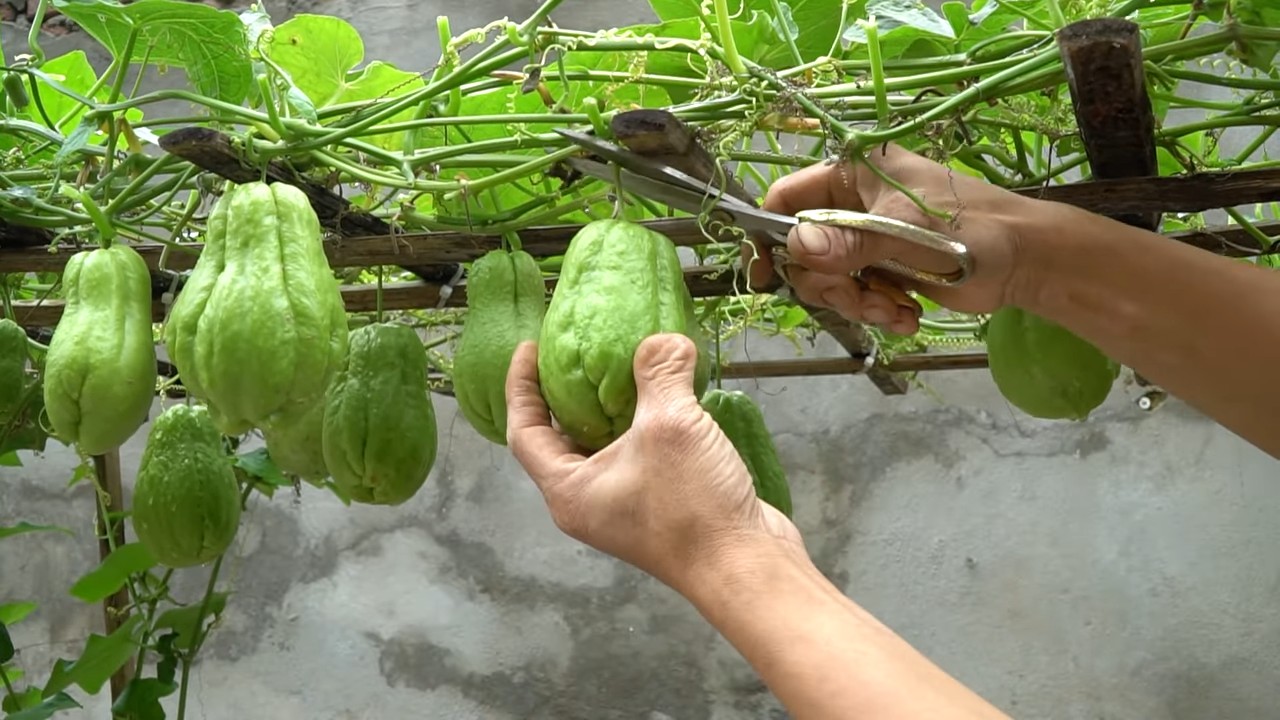
Growing Chayote in Your Small Garden: A Comprehensive DIY Guide
Hey there, fellow gardening enthusiasts! Ever thought about growing your own chayote squash? It’s a fantastic, versatile vegetable, and you might be surprised at how well it can thrive even in a small garden. I’m going to walk you through everything you need to know, from choosing the right spot to harvesting your very own chayote. Let’s get started!
Understanding Chayote
Before we dive into the nitty-gritty, let’s talk a little about chayote itself. Chayote (Sechium edule), also known as mirliton or vegetable pear, is a type of squash that’s native to Central America. It’s a vigorous vine that produces pear-shaped fruits. The entire plant is edible – the fruit, seeds, leaves, shoots, and even the root tubers! It has a mild, slightly sweet flavor, making it incredibly versatile in the kitchen. You can use it in stir-fries, soups, salads, or even bake it into desserts.
Why grow chayote?
* It’s a prolific producer, meaning you’ll get a lot of fruit from just one plant.
* It’s relatively easy to grow, even for beginners.
* It’s a space-saver compared to other sprawling squash varieties (with proper training).
* It’s a sustainable food source, as you can propagate new plants from the fruit itself.
Choosing the Right Location
Okay, so you’re ready to grow chayote. The first step is picking the perfect spot in your garden. Here’s what to consider:
* Sunlight: Chayote needs at least 6-8 hours of direct sunlight per day to thrive. Choose a location that gets plenty of sunshine.
* Soil: Well-draining soil is crucial. Chayote doesn’t like to sit in soggy soil. Amend your soil with compost or other organic matter to improve drainage and fertility. A slightly acidic to neutral pH (6.0-7.0) is ideal.
* Support: This is a vine, remember? It needs a strong trellis, fence, or pergola to climb on. The structure needs to be sturdy enough to support the weight of the mature vine and its fruits. I’ve seen people use everything from repurposed metal fencing to homemade wooden trellises.
* Space: Even though we’re talking about small gardens, chayote vines can still get quite large. Plan for at least 8-10 feet of space for the vine to spread. You can prune it to keep it in check, but it’s best to give it ample room to grow.
* Protection from Wind: While chayote is relatively hardy, strong winds can damage the vine and its fruits. Choose a location that’s sheltered from strong winds, if possible.
Planting Your Chayote
Now for the fun part – planting! Unlike many vegetables, chayote is typically grown from the whole fruit, not from seeds.
What you’ll need:
* A mature chayote fruit (preferably one that’s already started to sprout)
* Well-draining soil
* Compost or other organic matter
* A shovel or trowel
* Water
Step-by-Step Planting Instructions:
1. Choose your fruit: Select a mature chayote fruit that’s starting to sprout. You’ll see a small shoot emerging from the broader end of the fruit. This is a sign that it’s ready to plant. If you can’t find one that’s already sprouting, you can encourage sprouting by placing the fruit in a paper bag in a warm, dark place for a few weeks. Keep it slightly moist.
2. Prepare the soil: Dig a hole that’s about twice the size of the chayote fruit. Mix the soil you removed with compost or other organic matter to improve drainage and fertility.
3. Plant the fruit: Place the chayote fruit horizontally in the hole, with the sprouted end pointing upwards. Cover the fruit with soil, leaving the sprouted end exposed.
4. Water thoroughly: Water the newly planted chayote fruit thoroughly. Keep the soil consistently moist, but not waterlogged.
5. Provide support: As the vine starts to grow, gently guide it towards your trellis or other support structure. You may need to tie it to the support initially until it starts to climb on its own.
Caring for Your Chayote Vine
Once your chayote is planted, it’s important to provide proper care to ensure a healthy and productive vine.
* Watering: Water regularly, especially during dry periods. Chayote needs consistent moisture to thrive. Aim for about 1 inch of water per week.
* Fertilizing: Fertilize your chayote vine every few weeks with a balanced fertilizer. You can also use compost tea or other organic fertilizers.
* Pruning: Prune the vine regularly to keep it in check and encourage fruit production. Remove any dead or damaged leaves and stems. You can also prune the tips of the vines to encourage branching.
* Pest and Disease Control: Chayote is relatively pest-resistant, but it can be susceptible to aphids, spider mites, and squash bugs. Inspect your vine regularly for pests and take action if you see any. You can use insecticidal soap or neem oil to control pests. Powdery mildew can also be a problem, especially in humid climates. Improve air circulation around the vine and treat with a fungicide if necessary.
* Mulching: Apply a layer of mulch around the base of the vine to help retain moisture, suppress weeds, and regulate soil temperature.
Harvesting Your Chayote
The moment you’ve been waiting for! Chayote fruits are typically ready to harvest about 3-4 months after planting.
How to Harvest:
* Look for the right size: Harvest the fruits when they’re about 4-6 inches long and still tender. They should be firm and smooth.
* Use a sharp knife or pruners: Cut the fruit from the vine, leaving a short stem attached.
* Harvest regularly: Chayote vines are prolific producers, so you’ll need to harvest regularly to keep the vine producing.
Propagating New Plants
One of the coolest things about chayote is that you can easily propagate new plants from the fruit itself. It’s like a never-ending supply of chayote!
How to Propagate:
1. Select a mature fruit: Choose a mature chayote fruit that’s starting to sprout.
2. Plant the fruit: Plant the fruit as described above.
3. Wait for it to grow: That’s it! Just wait for the vine to grow and produce more fruit.
Dealing with Common Problems
Even with the best care, you might encounter some problems while growing chayote. Here are a few common issues and how to address them:
* Lack of Fruit: If your chayote vine isn’t producing fruit, it could be due to a lack of pollination. Chayote flowers are pollinated by insects, so make sure you have plenty of pollinators in your garden. You can also try hand-pollinating the flowers.
* Yellowing Leaves: Yellowing leaves can be a sign of nutrient deficiency or overwatering. Check the soil moisture and adjust your watering accordingly. Fertilize the vine with a balanced fertilizer.
* Pest Infestations: As mentioned earlier, chayote can be susceptible to pests like aphids, spider mites, and squash bugs. Inspect your vine regularly and take action if you see any pests.
* Disease: Powdery mildew is a common disease that can affect chayote vines. Improve air circulation around the vine and treat with a fungicide if necessary.
Chayote Varieties
While the standard green chayote is the most common, there are other varieties you might want to try:
* White Chayote: Similar to the green variety, but with a white skin.
* Spiny Chayote: Has small spines on the skin.
* Dark Green Chayote: A darker green color with a slightly different flavor.
Experiment with different varieties to find your favorite!
Using Chayote in the Kitchen
Okay, you’ve grown your chayote, now what? The possibilities are endless! Here are a few ideas:
* Stir-fries: Chayote is a great addition to stir-fries. It adds a mild, slightly sweet flavor and a satisfying crunch.
* Soups and Stews: Chayote can be added to soups and stews for extra flavor and nutrients.
* Salads: Grate raw chayote into salads for a refreshing crunch.
* Baked Dishes: Chayote can be baked into casseroles, gratins, and even desserts.
* Pickled Chayote: Pickle chayote for a tangy and delicious treat.
Don’t be afraid to experiment
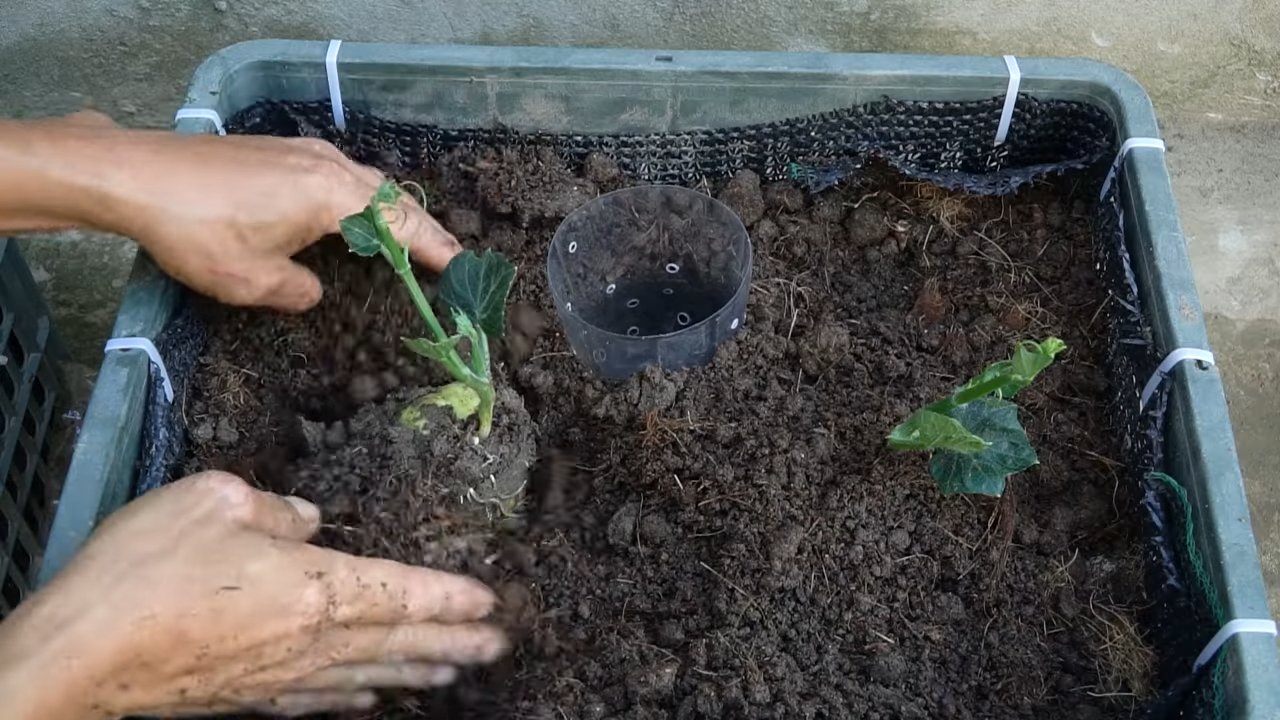
Conclusion
So, there you have it! Growing chayote in a small garden is not only possible, but it’s also incredibly rewarding. This versatile vegetable, often overlooked in grocery stores, can become a thriving part of your home garden, providing you with a continuous supply of fresh, delicious produce. We’ve walked you through the essentials, from choosing the right variety and preparing your space to nurturing your plant and harvesting its bounty.
But why is this DIY trick a must-try? Beyond the satisfaction of growing your own food, cultivating chayote offers several compelling advantages. First, it’s an incredibly productive plant. A single chayote vine can yield dozens, even hundreds, of fruits in a season, making it a highly efficient use of your garden space. Second, chayote is remarkably adaptable. While it thrives in warm climates, it can also be grown in cooler regions with proper care and protection. Third, it’s a sustainable choice. By growing your own chayote, you reduce your reliance on commercially produced vegetables, minimizing your environmental impact. Finally, and perhaps most importantly, homegrown chayote simply tastes better! The flavor is fresher, more vibrant, and undeniably superior to anything you can buy in a store.
Consider these variations to personalize your chayote-growing experience. For a more compact growth habit, try training your vine on a sturdy trellis or fence. This will not only save space but also improve air circulation, reducing the risk of disease. Experiment with different chayote varieties to discover your favorite flavor profile. Some varieties are smoother and milder, while others are more textured and flavorful. You can also explore different ways to prepare chayote in the kitchen. From stir-fries and salads to soups and stews, the possibilities are endless. Don’t forget to save some of your harvest for replanting next season, ensuring a continuous supply of this wonderful vegetable.
Growing chayote in a small garden is an investment in your health, your environment, and your culinary creativity. It’s a project that offers tangible rewards, from the satisfaction of nurturing a plant to the joy of harvesting your own fresh produce.
We wholeheartedly encourage you to give this DIY trick a try. Don’t be intimidated by the prospect of growing a new vegetable. With a little planning and effort, you can successfully cultivate chayote in your own backyard, no matter how small. And once you’ve experienced the joys of homegrown chayote, we’re confident that you’ll be hooked.
So, grab a chayote fruit, find a sunny spot in your garden, and get ready to embark on a rewarding gardening adventure. We can’t wait to hear about your experiences! Share your photos, tips, and recipes with us in the comments below. Let’s create a community of chayote enthusiasts and inspire others to discover the joys of growing their own food. Happy gardening!
Frequently Asked Questions (FAQ)
What is the best time to plant chayote?
The ideal time to plant chayote is in the spring, after the last frost. This allows the plant to establish itself during the warm growing season. However, in warmer climates with mild winters, you can plant chayote in the fall for a winter harvest. The key is to ensure that the plant has enough time to mature and produce fruit before the onset of cold weather. If you live in an area with a short growing season, you can start the chayote indoors a few weeks before the last frost to give it a head start.
How much space does a chayote vine need?
Chayote vines are vigorous growers and require ample space to spread. Ideally, you should provide at least 8-10 feet of horizontal space for each vine. This allows the plant to develop a strong root system and produce a bountiful harvest. If you have limited space, you can train the vine on a trellis or fence to grow vertically. This will help to conserve space and improve air circulation. However, even with vertical training, it’s important to provide adequate support for the heavy fruits.
What kind of soil is best for growing chayote?
Chayote thrives in well-drained, fertile soil that is rich in organic matter. Before planting, amend your soil with compost, aged manure, or other organic materials to improve its drainage and nutrient content. The ideal soil pH for chayote is between 6.0 and 7.0. If your soil is acidic, you can add lime to raise the pH. If it’s alkaline, you can add sulfur to lower the pH. Regular soil testing can help you determine the specific needs of your soil.
How often should I water my chayote plant?
Chayote plants need consistent moisture, especially during the growing season. Water deeply and regularly, ensuring that the soil remains moist but not waterlogged. The frequency of watering will depend on the climate, soil type, and rainfall. In hot, dry weather, you may need to water daily. In cooler, wetter weather, you can water less frequently. Mulching around the base of the plant can help to retain moisture and suppress weeds.
What kind of fertilizer should I use for chayote?
Chayote plants benefit from regular fertilization, especially during the growing season. Use a balanced fertilizer with equal amounts of nitrogen, phosphorus, and potassium (e.g., 10-10-10). Apply the fertilizer according to the package instructions. You can also supplement with organic fertilizers, such as compost tea or fish emulsion. Avoid over-fertilizing, as this can lead to excessive vegetative growth and reduced fruit production.
How long does it take for chayote to produce fruit?
Chayote plants typically take 4-6 months to produce fruit after planting. The exact time will depend on the climate, variety, and growing conditions. In warmer climates, you may see fruit sooner. In cooler climates, it may take longer. Be patient and continue to provide proper care, and you will eventually be rewarded with a bountiful harvest.
How do I know when chayote is ripe?
Chayote fruits are typically harvested when they are young and tender, about 4-6 inches in length. The skin should be smooth and light green. Avoid harvesting fruits that are overly mature, as they can be tough and fibrous. You can also test the ripeness by gently pressing on the fruit. If it feels firm and slightly resistant, it’s ready to harvest.
Can I grow chayote from seed?
While it’s possible to grow chayote from seed, it’s more common and reliable to grow it from a whole fruit. The fruit itself contains the seed. To plant, simply place the entire fruit horizontally in the soil, with the stem end slightly exposed. The fruit will eventually sprout and develop into a vine.
Are there any pests or diseases that affect chayote?
Chayote plants are generally resistant to pests and diseases. However, they can be susceptible to aphids, spider mites, and squash bugs. These pests can be controlled with insecticidal soap or neem oil. Chayote can also be affected by fungal diseases, such as powdery mildew and downy mildew. These diseases can be prevented by providing good air circulation and avoiding overhead watering. If you notice any signs of pests or diseases, take action promptly to prevent them from spreading.
Can I eat the leaves and shoots of the chayote plant?
Yes, the leaves and shoots of the chayote plant are edible and nutritious. They can be used in salads, stir-fries, and soups. The leaves have a mild, slightly sweet flavor. The shoots are tender and crisp. Harvest the leaves and shoots when they are young and tender. Avoid eating the older, tougher leaves.
How do I store chayote?
Chayote can be stored in the refrigerator for several weeks. Wrap the fruits in plastic wrap or place them in a plastic bag to prevent them from drying out. You can also freeze chayote for longer storage. To freeze, blanch the fruits in boiling water for a few minutes, then cool them in ice water. Drain well and pack them in freezer bags or containers.
Is chayote a perennial or an annual?
Chayote is a perennial vine in warm climates (USDA zones 8-10). In colder climates, it is typically grown as an annual, as the plant will die back in the winter. However, you can overwinter the roots in a frost-free location and replant them in the spring.
What are some ways to cook with chayote?
Chayote is a versatile vegetable that can be used in a variety of dishes. It can be eaten raw in salads, stir-fried, baked, boiled, steamed, or grilled. It has a mild flavor that pairs well with a variety of seasonings and sauces. Some popular chayote recipes include chayote squash casserole, chayote and shrimp stir-fry, and chayote soup. You can also use chayote as a substitute for other vegetables, such as zucchini or summer squash.
Can I grow chayote in a container?
Yes, you can grow chayote in a container, but it will require a large container (at least 20 gallons) and a sturdy trellis or support structure. Container-grown chayote may not produce as much fruit as plants grown in the ground, but it’s still a viable option for those with limited space. Ensure the container has good drainage and use a high-quality potting mix.
Is growing chayote in a small garden worth the effort?
Absolutely! Despite
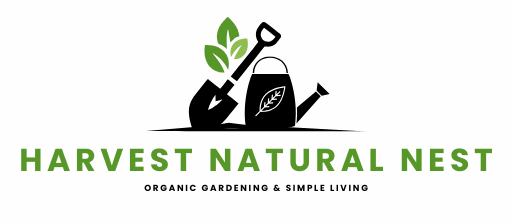

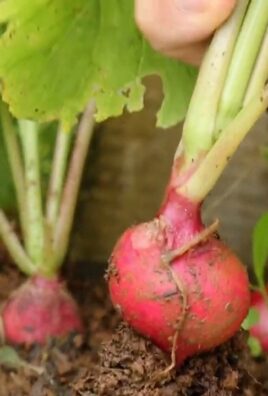
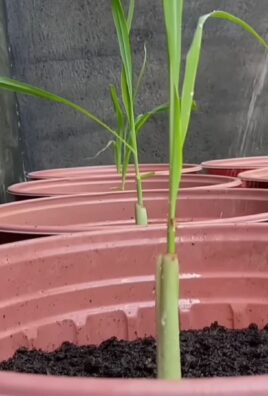
Leave a Comment